SISTEMA FESTIVAL FOTOGRAFIA: IDENTITIES, STRATEGIES AND PROJECTS
Who are the artistic directors of the five festivals that gave life to the Sistema Festival Fotografia in 2017?
What is their point of view on the state of the art of photography in Italy today? What are the consonances and what are the differences in the research and planning they have built up over the years? We asked them to discuss with each other directly, in a sort of chain interview.
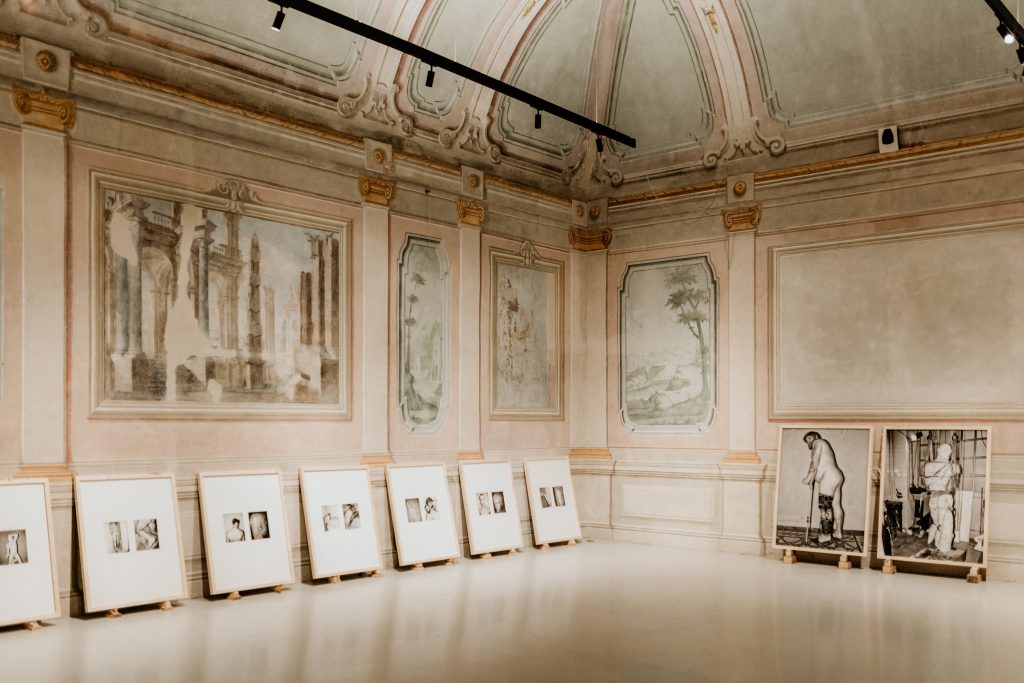
Enrico Stefanelli (Photolux Festival) to Walter Guadagnini (Fotografia Europea)
In these years of artistic direction of Fotografia Europea what was the research path, what are the objectives that you have set for yourself? What has changed since 2015?
It depends on the point of view: from that of the relationship with the public, the main goal was to match the expectations of the general public with those of professionals. We believe that research and popularity are not incompatible, but we must find the right balance between the two. From the point of view of the identity of the Festival, we tried to provide themes that were not only related to current events, but that would allow a broader view. In the relationship with the city, we have tried to enhance, also by providing them with a frame, the thousand initiatives that are growing spontaneously around the Festival, and at the same time to exploit the exhibitions to give visibility to the city’s less known spaces, sometimes recovered or reopened precisely in this occasion. Structurally, with the arrival of the Palazzo Magnani Foundation into the organization of the Festival, there was an essential change in its creative process and its positioning among city events.
You have held different roles in the field of photography – among others, since 2016 you have been director of CAMERA Torino – what changes in your curatorial approach when you work at the Festival?
In my opinion, it is necessary to consider the particular situation of photography in Italy: the chronic and still existing lack of institutional spaces for the conservation and spread of photographic culture means that festivals must often play a substitute role for an activity, that in other countries is developed throughout the year by the institutions. Arles, for example, is in a country where, only in Paris, you can find the Jeu de Paume, Le Bal, the MEP, the space dedicated to photography at the Centre Pompidou, and I stop here for the love of my country… they live in this condition, so in some way, I believe they have a great responsibility from the point of view of the diffusion not only of language, but also of photographic culture in a broad sense. In this sense, as far as my personal experience is concerned, it is not very different from the work we carry out every day at CAMERA. What changes is that in a Festival you play all your cards in a few weeks, if you do something wrong you can try to make up for it only after twelve months, so it is clear that the immediate response to what is proposed is anything but secondary.
A question to which perhaps there is no answer, but which we are all asking ourselves, now more than ever, given the difficulties that emerged with the Covid-19 pandemic. What is the future of the Festivals? Which direction should we take?
Let’s say that the first direction was to look for new spaces, mainly outdoors, which is obviously not easy, because the cheapest solutions are today – for an audience that has, fortunately, become more aware thanks to the work of the festivals, as well as for the authors themselves – unthinkable, and the most fascinating solutions, which still exist, pose problems of various kinds, from economic ones to those of the quality of the work to those of its conservation, even if only for the short period of a Festival. Similarly, it is true that one of the reasons of festivals is to be meeting points, you go to a festival not only to see exhibitions or attend conferences, but also to meet people: if the movements are more difficult, this aspect is also in jeopardy – and with it, therefore, the very identity of the Festival format. In short, we need a wider reflection, which does not stop at the exceptional nature of the moment, but understands the direction that the world of cultural events is taking.
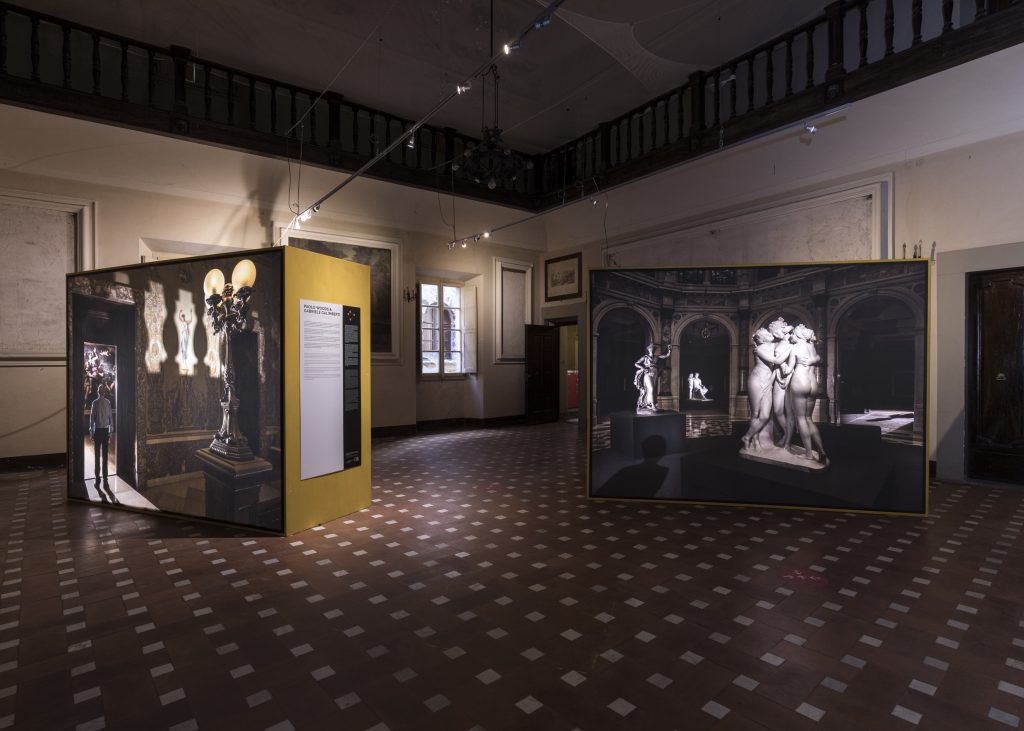
Walter Guadagnini (Fotografia Europea) to Arianna Rinaldo (Cortona On The Move)
What do you love the most about your job?
There are many aspects that I love about my job. First of all, the possibility of access, through the incessant work of photographers, to such different, simple and complex, sophisticated and direct views of the world, which allow me, every day, to reflect on the world around us, on who we are and on what we want. Secondly, I love following long-term projects, accompanying the evolution of a work, together with its author, witnessing what an honest and thorough commitment can do. I am fascinated by the coherence of authors who pursue an idea, a vein, a necessary story, with the strong and inevitable belief that it must be told. I love the role of mentor, intended as an accompanying person in a process of growth and evolution of an artist and their project.
I admire the resilience of the profession of the photographer and the artist, in all its forms. I never get tired of looking for original visions and seeing new stories and perceiving, by those who produced/created/edited them, the nuances of meaning and the possible side effects that they can cause: first of all, to make us reflect on the place we have in the world.
What kind of relationship do you create with the artists you work with?
In general, I always try to get as close to their world as possible, get inside their head, see with their eyes. I try to understand the reasons behind their work, the initial trigger of the path and above all what the “future” can be in its various forms. I am very pragmatic, therefore, with my feet on the ground, I move towards feasibility. From conception to realization. I always like to understand “where they come from” and “where they want to go”.
I think I am a good listener: that is, I know how to understand from the artists I work with, and in a fairly rapid and intuitive way, what their intention is, their reasons, the concept of the project. When this “clicks”, the work relationship becomes fluid, constructive and often, continuous.
However, in the sometimes accelerated pace of certain projects, the time is not always enough for the in-depth knowledge I would like. Sometimes, the needs of production and creation of the work do not leave room for that part of conversation that I would like to trigger the evolution of a project.
What was the most difficult moment in these 10 years of artistic direction of Cortona On The Move? And what the most exciting?
The difficult moments were essentially two. The first and the last, and obviously for different reasons.
For my first edition, in 2012, facing the opening days was an immense inner drama. The sense of inadequacy, inexperience, fear were overwhelming, to the point that I have no memory of those very first days of presentation. The satisfaction for the job done was then immense, and matched by the joy of the team and the public who participated in giving life to those very first steps in the evolution of what is today the visual narrative festival, Cortona On The Move.
The closing moment of the opening days of this 2021 edition, my tenth and last, was also very difficult. It’s even more difficult to describe it, to make sense of a mixture of emotions that include years of passion, complicity, creation, expectations, satisfaction, challenges, successes, in the knowledge that, like when a child goes to college, you must be happy and proud, despite feeling a great emptiness inside and, right from the start, a lot of nostalgia.
Each edition was thrilling; specifically, the opening when the work of a whole year focuses on the experience of a few days, takes shape and is available for everyone to see. The encounters, the amazement, the smiles, the looks: to feel that, once again, the work done was good, and pushes us to continue to find new ideas and ways of dealing with photography.
Starting from this experience, in your opinion what specific role can a photography festival play today, compared to other cultural events?
I often hear that there are too many photography festivals. In Italy, in Europe, in the world. I couldn’t agree less. The more the better! Each with its characteristics, its mission and its audience. The beauty of festivals is, the name itself says it, celebration. The royal and noble role of bringing photographic art to squares, towns, churches, ancient buildings, streets, parks is fundamental. Photography is a “democratic” language, they say, and even more so in our hyper-visual and benignly voyeur world.
Photography festivals, therefore, have that role of filter, of selection (similar to all operators in the sector, photo editors, curators, publishers, on and offline) and guide in the presentation of the visual stories that reach an audience that often becomes a faithful companion over time, thanks to that fortunate combination of storytelling, encounters, and magic that form the “human” basis of festivals.
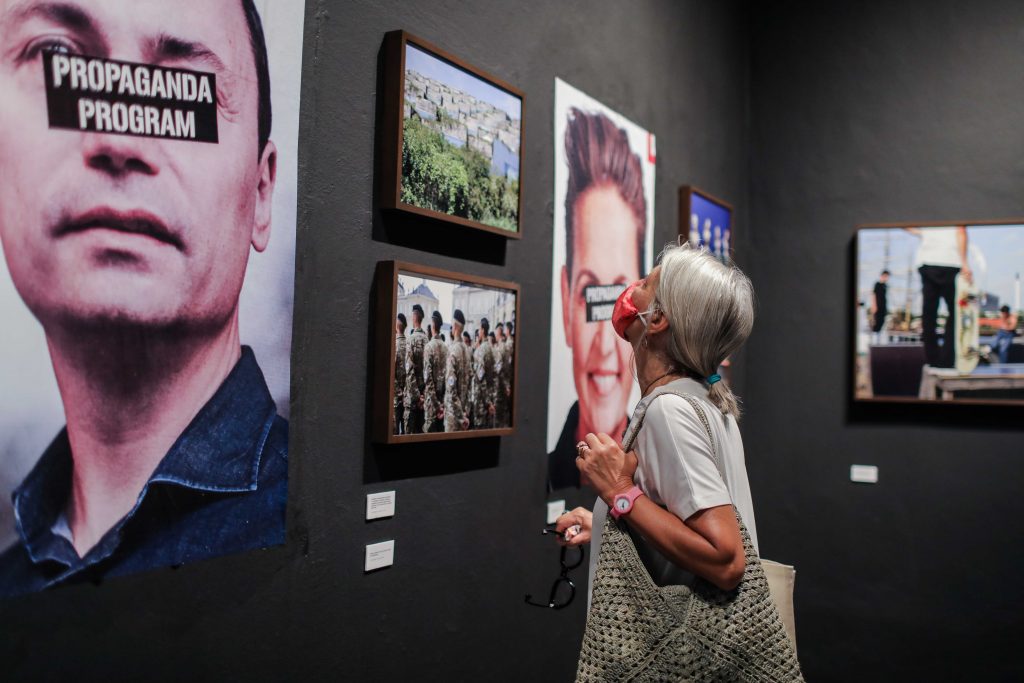
Arianna Rinaldo (Cortona On The Move) to Denis Curti (SI FEST)
For those who have experienced the evolution of the profession and language of photography so closely in the last 30+ years, in addition to the digital revolution, what do you think is the most impactful change/event of these decades and why?
The evolution of the profession and language in the photographic field, in my opinion, has to do with the idea of images that we have today. The digital medium has been the bearer of democracy and has granted us the privilege of approaching images with greater spontaneity. Today photographs are “friends and confidants” and within them we look at ourselves in relation to others. Taking a photograph often means looking for and creating a relationship. Let’s say that no one “snaps” only for themselves. So the most impacting change is about us, about our feelings and the emotions we decide to share.
In your job as a curator and more, how important do you consider personal and prolonged acquaintance with a photographer in the process of working together and how has this relationship changed, due to the less and less frequent “real” contact replaced by “virtual” encounters?
I can refer to a specific case, David LaChapelle’s. In short, I can say that after having worked a lot together, but from a distance (mainly for logistical reasons and not for the consequences of the pandemic) we had the opportunity to meet face-to-face in his studio in Los Angeles and from that moment on my professional relationship with him has changed. I was able to experience his human essence and his passion. We talked a lot about his idea of photography as a scenic art, as the construction of a parallel world. Discussing these issues face-to-face as you walk into an immense and spectacular studio, where you can see the sets of his most significant photos, has an incredible added value. So, I can say that I consider it a privilege to be able to “meet” photographers, work with them, visit their studios and archives. This way of working increases empathy and allows a deeper knowledge of their projects. Remote work is not for me.
Many modern and contemporary photographers have not studied photography, they are engineers, architects, computer scientists. How important is academic training in the field, and what other “ways of learning” validate and deepen the profession of the photographer?
It’s like you say. Among the greatest there are those who have studied economics, philosophy, history, architecture… I still believe that the systematic study of photography remains important, I would say decisive. Let’s put it this way: the most interesting authors I’ve met have carried out studies of different types and genres. Having acquired a certain awareness, they all decided to deepen the “photography matter” looking for specialized classes, a master, an internship abroad. In short, I think that a photographer must build his own cultural profile, because that baggage will then be useful to deepen the events that have to do with images. You only see what you know and that is the only way you can tell it.
If life hadn’t led you to be so intrinsically linked to the world of photography, what would Denis Curti do today? And instead, as a curator, what is your advice to the young people who want to take this professional path today?
As an alternative to my profession, which I love very much, I would have chosen to be a lawyer. I am animated by a deep sense of justice. To young people who intend to devote themselves to the various professions linked to the world of photography, I suggest investing in a rich cultural education in a broad and specific sense, visiting museums and exhibitions and embracing opportunities for exchange and dialogue.
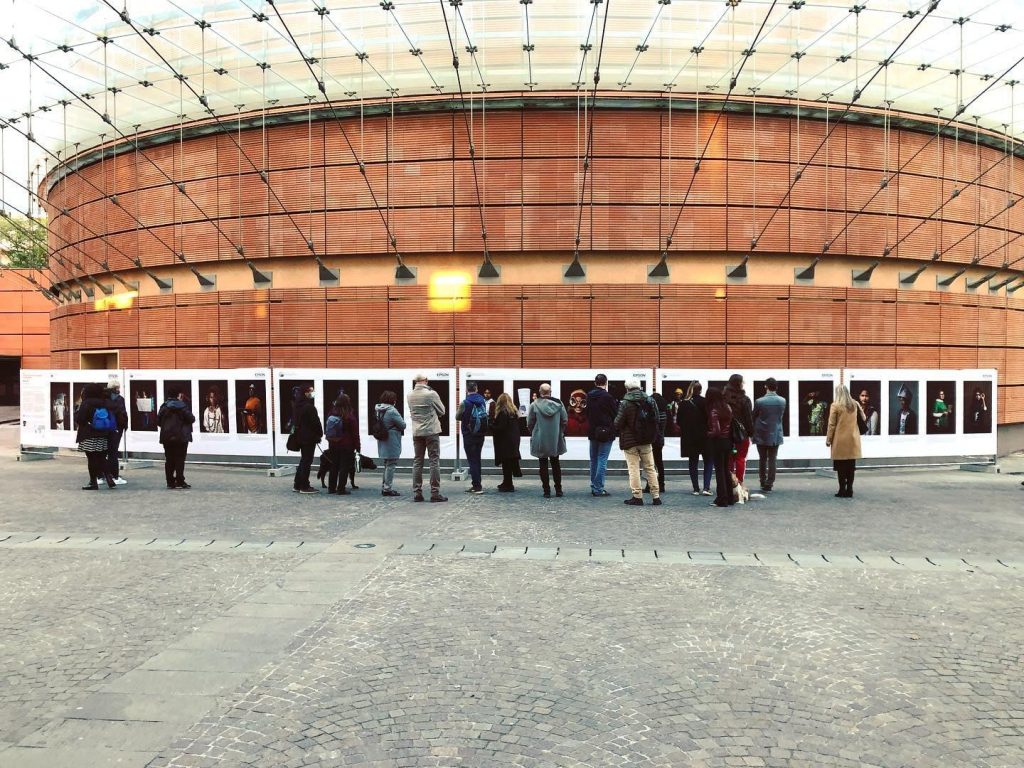
Denis Curti (SI Fest) to Alberto Prina (Festival della Fotografia Etica)
What kind of assessment can be made of these 12 years of Ethical Photography Festival? What is the Festival’s link with the city of Lodi and what with its institutions?
Twelve years constitute history and a heritage that can now be defined as consolidated and important.
The greatest authors of international photojournalism and documentary photography, over time, have left a corpus of material, shared experience and photographic culture to the Festival. The idea of involving a heterogeneous audience has never stopped being pursued, not even through a pandemic, and it certainly is a particular and characterizing experience, supported by the photographers who meet the visitors. At the same time, its vocation strongly oriented towards training and education in photographic language has become an important element nationwide.
The internationalization of the exhibitions and the authors have helped to create a global vision and an important, consolidated and shared culture.
There are still many goals to be achieved, including the creation of a permanent exhibition circuit throughout the year which could also travel, promoting and consolidating the Ethical Photography brand through national and international collaborations.
In this extremely active and energetic scenario, relations with institutions still have some surprising margins for growth.
Ethics and aesthetics: the eternal battle within the boundaries of photography. How do you get out without anyone getting hurt?
From the very beginning, the festival has worked to ensure that its exhibitions would keep these two elements together.
Ethics was always present and decisive, right from the name of the festival. Aesthetics at the service of change, human and social growth, awareness as a human race, is a founding prerogative of the very spirit of the event.
The awareness of the deontological respect for photojournalism, its innate drive to tell and interpret reality have always been key elements and constant dialogue with the most aesthetic and conceptual expressions of photography.
Your open calls are always very successful. What does this “obvious” need to photograph mean? Is it the intention to tell a story? Among the various projects, does empathy or voyeuristic narration prevail?
The great effort to share the values of documentary photography has always been the centre of dialogue with the heterogeneous world of photography. An exchange that often allows photographers to express their voice in calls and competitions. The large international participation has certainly raised the bar, leading to projects of profound empathy, in-depth analysis and great professionalism. Voyeuristic participation, as long as it is always present over time, constitutes a physiological and insignificant percentage.
We believe that promoting a shortlist of photographers has contributed a lot to creating a culture in the field as it was the expression of international juries of professionals who each year select over 50 photographers, whose projects can be viewed and taken as a reference.
The recent project of “Spotlight photographers meet the Masters” is a clear sign of wanting to make the calls not only simple “competitions” but also opportunities for comparison and growth among photographers who have different professional backgrounds and careers.
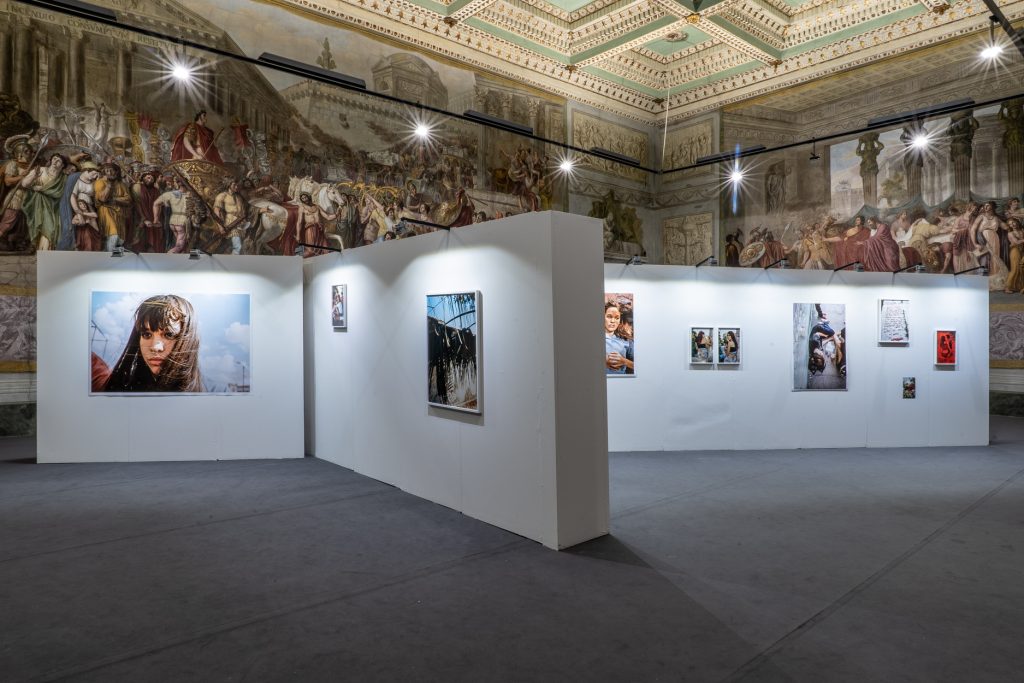
Alberto Prina (Festival della Fotografia Etica) to Enrico Stefanelli (Photolux Festival)
Why are photography festivals even more necessary today?
More than necessary I would say valuable, since Italy lacks institutional spaces, serious resources, thought and planning for photography. For this reason, the Festivals felt invested with the responsibility to fill this gap. But, in a sort of spiral from which it is difficult to get out, they have not always managed to do it in the best way, given the little support from the institutions and the unavoidable difficulty in finding the economic resources necessary to ensure a high quality of the offer.
Furthermore, over the last decade in Italy festivals and events dedicated to photography have multiplied. This overabundance of proposals can confuse the public; in my opinion, we need a smaller offer but more quality. I would say, then, that more than photography festivals, we need the good practices they are able to develop, as much as the connections and shared projects they are able to build, especially when they overcome localisms and work as a network, as we are doing with the Sistema Festival Fotografia.
Art and life, what is the dialogue in photography?
In each edition of the Festival, the most ambitious challenge was to explore the main theme by overcoming the conventional narrative, proposing other levels of reading and opening unprecedented scenarios in which even a large audience, not fully “equipped” for art and photography in particular, could find elements of resonance and reflection.
How do you see Photolux in five years’ time?
With the uncertainty of this time that we are experiencing, it is difficult and very risky to try to answer this question.
Surely the next few years will be years of reflection, study and research. Today more than ever, we need to find a new path that takes into account the changes that the world of culture is developing.
We had already perceived this urgency at the end of the last edition of the Biennale, in 2019. The first counter-move we put in place was to open the artistic direction to a committee that now sees in addition to myself and Chiara (Ruberti, who has been coordinating the Festival since 2015) also Francesco Colombelli and Rica Cerbarano, with the intention of building a new, fresh and shared vision, capable of intercepting current requests, themes and research.
::
In the articles below, written by our editorial staff with the participation of Benedetta Donato as guest contributor, we deepen identities and programs of the five Festivals and RESET. Sistema Festival Fotografia talks about contemporary society, the first coral project realized by Sistema Festival Fotografia winner of the “Strategia Fotografia 2020” call for proposal promoted by the Directorate-General for Contemporary Creativity of the Italian Ministry of Culture.





